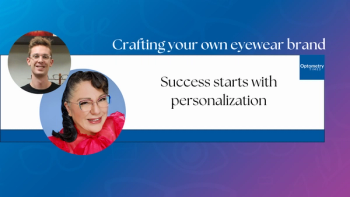
Study reports the majority of MiYOSMART spectacle lens users continue use for as long as 8 years
By alternating the focus area—or the clear zone of the lens—and defocus area—the honeycomb-shaped segment of the lens—the spectacle lenses achieve clear vision and manage myopia progression.
A new clinical study evaluating long-term myopia control effect and user experience in patients wearing Defocus Incorporated Multiple Segments (DIMS)-outfitted MiYOSMART spectacle lenses found that a significant amount of said patients continued to wear the lenses for as long as 8 years. Findings from the 8-year follow-up clinical study were presented by HOYA Vision Care at the 60th International Myopia Conference 2024 in Sanya, China, according to a news release.
“With myopia on the rise, it is important for eye care professionals to choose treatments to slow the progression in children based on best evidence available,” said Carly Lam, PhD, principal investigator of the study, in the release. “Previous research has shown that the DIMS spectacle lenses appear to be a safe and effective method for managing myopia among the study population. We’re looking forward to seeing the impact of longer-term use on myopia management in this pediatric population.”
According to HOYA, the randomized, controlled trial is the longest of its kind conducted and presented on the MiYOSMART lenses. Of study participants, 60% who wore the DIMS spectacles for 6 years continued to wear the lenses for as long as 8 years.1 All participants were satisfied with the benefits from the DIMS lenses, according to the release.
DIMS technology has a ring-shaped treatment area to slow myopia progression. By alternating the focus area—or the clear zone of the lens—and defocus area—the honeycomb-shaped segment of the lens—clear vision and management of myopia is obtained.1,2 The lens has also been found to remain consistent on the myopia management front in a different study over 6 years.2
“Childhood myopia is a widespread concern, and we are committed to continue fighting this problem, by using innovative solutions like MiYOSMART spectacle lenses. We look forward to the data from this important study as we continue to work to slow the progression of myopia in children and preserve their vision and eye health for the future,” said Natalia Vlasak, MD, MBA, global head of Medical and Scientific Affairs at HOYA Vision Care, in the release.
The MiYOSMART spectacle lenses have not been approved for use in the management of myopia and is currently not on the market in the US. However, HOYA has sold more than 8 million MiYOSMART spectacle lenses in more than 35 countries and regions.1
Reference:
HOYA Vision Care announces the results of the longest follow-up study conducted and presented on myopia management spectacle lenses worldwide. News release. HOYA Vision Care. September 27, 2024. Accessed September 30, 2024.
MiYOSMART. HOYA Vision Care. Accessed September 30, 2024. https://www.hoyavision.com/for-spectacle-wearers/miyosmart/
Newsletter
Want more insights like this? Subscribe to Optometry Times and get clinical pearls and practice tips delivered straight to your inbox.
















































.png)


